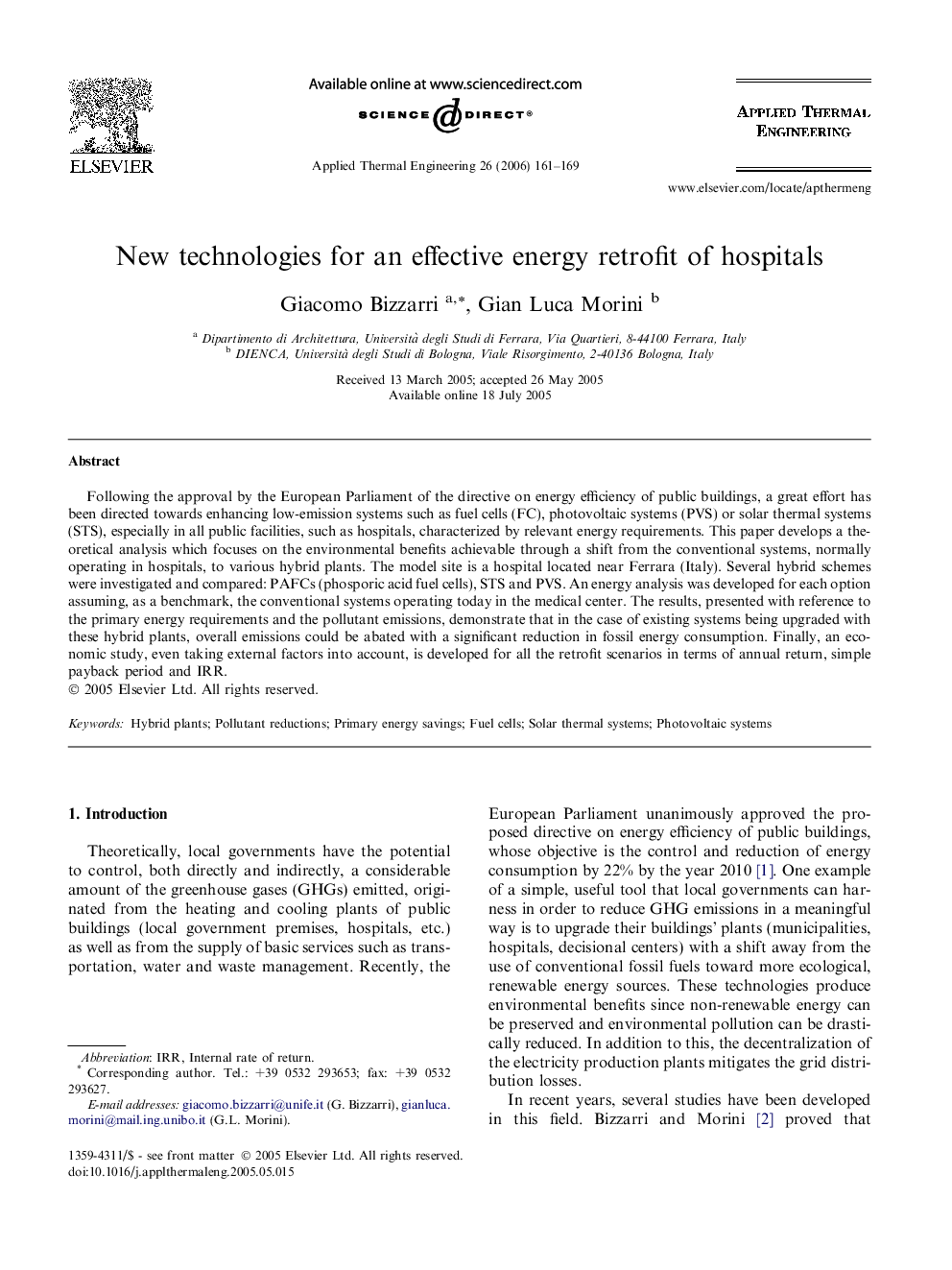| Article ID | Journal | Published Year | Pages | File Type |
|---|---|---|---|---|
| 649836 | Applied Thermal Engineering | 2006 | 9 Pages |
Following the approval by the European Parliament of the directive on energy efficiency of public buildings, a great effort has been directed towards enhancing low-emission systems such as fuel cells (FC), photovoltaic systems (PVS) or solar thermal systems (STS), especially in all public facilities, such as hospitals, characterized by relevant energy requirements. This paper develops a theoretical analysis which focuses on the environmental benefits achievable through a shift from the conventional systems, normally operating in hospitals, to various hybrid plants. The model site is a hospital located near Ferrara (Italy). Several hybrid schemes were investigated and compared: PAFCs (phosporic acid fuel cells), STS and PVS. An energy analysis was developed for each option assuming, as a benchmark, the conventional systems operating today in the medical center. The results, presented with reference to the primary energy requirements and the pollutant emissions, demonstrate that in the case of existing systems being upgraded with these hybrid plants, overall emissions could be abated with a significant reduction in fossil energy consumption. Finally, an economic study, even taking external factors into account, is developed for all the retrofit scenarios in terms of annual return, simple payback period and IRR.
